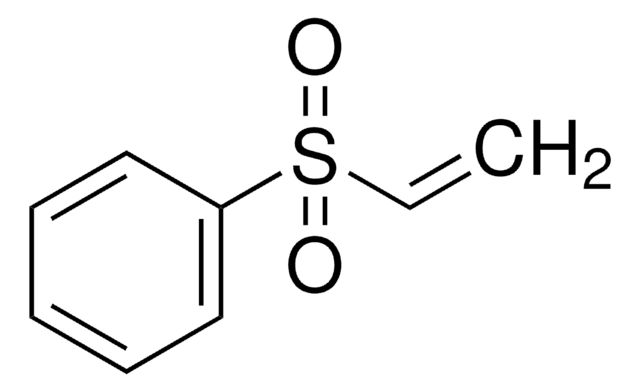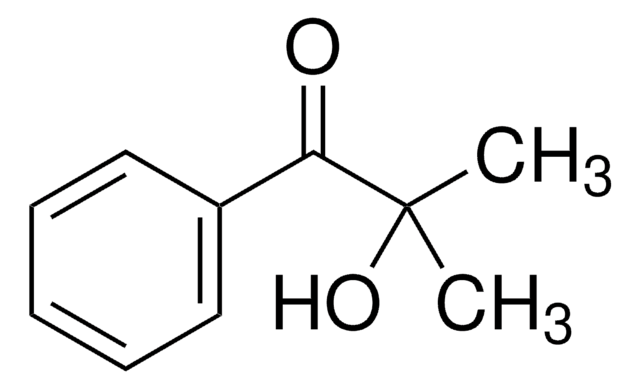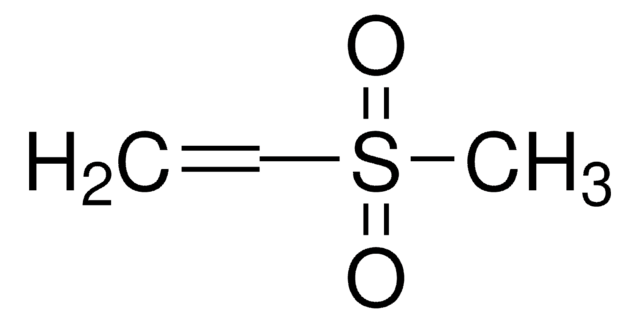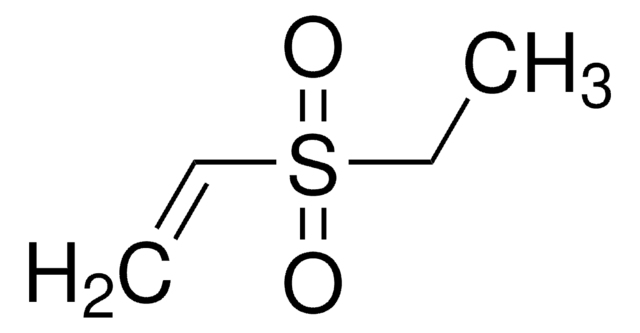340855
Glutaraldehyde solution
50 wt. % in H2O
Sinónimos:
Glutaric dialdehyde solution, Pentane-1,5-dial
About This Item
Productos recomendados
vapor density
1.05 (vs air)
Quality Level
vapor pressure
15 mmHg ( 20 °C)
form
liquid
concentration
50 wt. % in H2O
technique(s)
electron microscopy: suitable
immunoblotting: suitable
immunohistochemistry: suitable
color
colorless
refractive index
n20/D 1.42
mp
-21 °C ((-6 °F))
solubility
water: soluble
density
1.106 g/mL at 25 °C
suitability
suitable for microfluidics/nanofluidics
application(s)
cell analysis
genomic analysis
life science and biopharma
sample preparation
SMILES string
[H]C(CCCC([H])=O)=O
InChI
1S/C5H8O2/c6-4-2-1-3-5-7/h4-5H,1-3H2
InChI key
SXRSQZLOMIGNAQ-UHFFFAOYSA-N
¿Está buscando productos similares? Visita Guía de comparación de productos
General description
Glutaraldehyde is capable of efficiently crosslinking amine and hydrazine derivatives to proteins and other amine-containing polymers. Notably, in certain reactions, biotin hydrazides have been directly coupled to nucleic acids using glutaraldehyde, presenting a potential utility in conjugating fluorescent hydrazides and hydroxylamines to DNA. In histology studies, Glutaraldehyde is also employed to preserve tissue sections and prepare them for closer examination.
Application
- To compose the fixative solution (Glutaraldehyde + Paraformaldehyde + NaPO4) for use in high-resolution light microscopy and electron microscopy studies.
- To study the conjugation of goat anti-horseradish peroxidase with alkaline phosphatase by a reported method.
- To compose the primary fixative, which is employed to protect the deterioration of cytoplasmic features of yeast cells during permanganate fixation.
Features and Benefits
- Versatile and adaptable for wide variety of research applications
- Ready-made solution reduces the need for preparation time
Other Notes
comparable product
signalword
Danger
Hazard Classifications
Acute Tox. 3 Inhalation - Acute Tox. 4 Oral - Aquatic Acute 1 - Aquatic Chronic 2 - Eye Dam. 1 - Resp. Sens. 1 - Skin Corr. 1B - Skin Sens. 1 - STOT SE 3
target_organs
Respiratory system
supp_hazards
Storage Class
6.1A - Combustible acute toxic Cat. 1 and 2 / very toxic hazardous materials
wgk_germany
WGK 3
Elija entre una de las versiones más recientes:
¿Ya tiene este producto?
Encuentre la documentación para los productos que ha comprado recientemente en la Biblioteca de documentos.
Contenido relacionado
Three-dimensional (3D) printing of biological tissue is rapidly becoming an integral part of tissue engineering.
Nuestro equipo de científicos tiene experiencia en todas las áreas de investigación: Ciencias de la vida, Ciencia de los materiales, Síntesis química, Cromatografía, Analítica y muchas otras.
Póngase en contacto con el Servicio técnico







